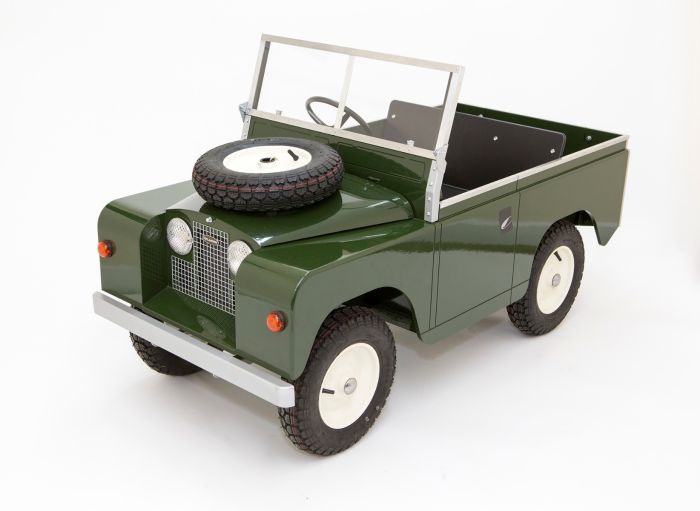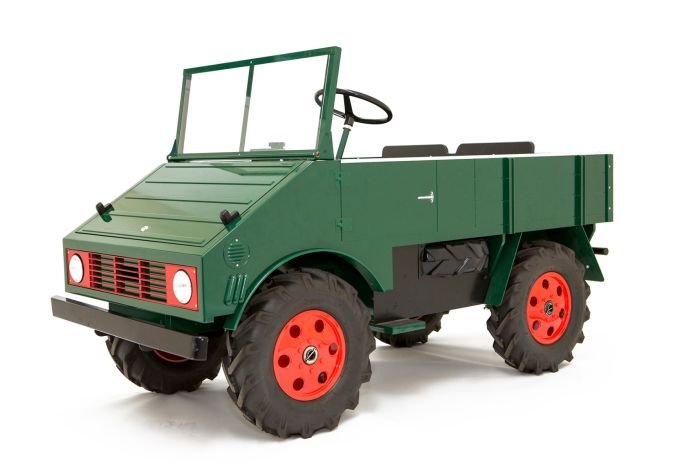The safety features of a child's ride-on car are vital to their enjoyment. Seat Belts, for example are a security measure which is essential to think about.
Seat belts can help keep your child secure when riding on the vehicle. It reduces the risk of them falling down or being ejected from the vehicle during play. The seat belts add an additional layer of safety to your child, especially when there are abrupt stops or abrupt turns.
Pros - Some ride-ons vehicles particularly those intended for children don't have seat belts. Kids may be able to find seat belts restrict or uncomfortable which can cause them to reject or resist using them.
Sturdy Construction
Pros: A ride-on car with sturdy construction and quality materials is more robust and resistant to damage, ensuring long-term safety and dependability. It's built to last long enough to handle the stresses of the game while ensuring stability.
Cons - Sturdy design usually costs more at a higher that makes it less affordable for some families. Furthermore, the heavier materials could affect the portability and maneuverability of the ride-on vehicle.
The Low Center of Gravity
Pros: Ride-ons that have lower center of gravity are less likely to tip, reducing the risk of accidents. They are more stable and provide greater balance, particularly in turns and maneuvers.
Pros - Ride-ons that have an unbalanced center of gravity could compromise ground clearance in order to be off-road capable. This can limit the rider's versatility.
Child Remote Control -
Pros: Remote-controlled cars allow parents to supervise and monitor their children's play, providing an additional layer of control and security. Parents can intervene in the event of an emergency arises, or navigate difficult terrain, or avoid collisions.
Cons - Parental remote control could limit children's independence as well as independence, since they depend on guidance from parents and help when playing. Also, remote-controlled cars may cost more than manual versions.
Speed Limiters
Pros: Ride-ons that have speed limits or speed settings that can be adjusted permit parents to control the maximum speed of the vehicle, reducing accidents and collisions. They may increase the speed gradually as the child gains confidence and develops skills.
Pros - Some drivers may outgrow the slower speed settings very quickly. This could cause frustration with the vehicle. Also, speed limiters might not be available on all models or may need additional features or accessories.
Safe Start Technology -
Pros The Safe Start Technology makes sure that the ride-on vehicles start and stop smoothly. This reduces the risk of sudden jerks which can cause a panic or shock to the child. It gives a more relaxed and safer ride.
Cons - Ride-on cars with safe start features might cost more than basic models without this feature. In addition, some kids may find the gradual acceleration and deceleration less interesting or enjoyable than quick stops and starts.
Visibility Enhancements
Pros: Ride-on cars with improved visibility, such as taillights and headlights made of or reflective materials may increase visibility even in dimly lit or low-light conditions. The cars are noticeable, which improves safety.
Cons - The increased visibility may result in the battery draining more quickly, or to increase the level of complexity. This can increase the chance of maintenance issues or problems.
Consider these safety features consider their advantages and disadvantages and choose a ride on vehicle that is designed to prioritize your child's safety, while offering a fun and enjoyable play experience. See the top rated Lamborghini ride on car for more examples including toy the car, toy car for car, childrens electric ride on, ride a toy, car toy toy, ride on toy, digger ride, pedal car, toy cars, remote control childrens car and more. .

What Assembly And Maintenance Requirements Are There For Kid's Ride-On Cars?
To ensure the safety of your children and their durability, most kid's ride-on vehicles require assembly. Here are some common assembly and maintenance needs for children's ride-on cars:
The majority of vehicles with ride-ons arrive partially assembled and need some sort of assembly. This usually involves attaching the components such as wheels as well as the steering wheel, seats, and other accessories according to the specifications of the manufacturer.
Follow the assembly directions carefully to ensure that all components are properly aligned and securely connected. As directed finish the assembly with the tools and hardware provided.
Cleaning
For the ride on car to appear its best and work effectively, regular cleaning is necessary. Make use of the soft, dampened sponge or cloth with mild soapy and warm water to wash exterior surfaces.
Be particularly attentive to places that can be prone to buildup, like undercarriage, tires, and wheels. To remove stubborn dirt and grime, use a toothbrush or brush to reach areas that are hard to reach.
Beware of harsh chemicals and aggressive detergents. They can harm electronic components as well as the paint of your ride-on vehicle.
Battery Care
Battery care is crucial for any ride-on powered by rechargeable batteries. A proper battery maintenance program ensures performance and prolong battery lifespan. It is simple to maintain your battery by following these tips.
Charge the battery before each use, and completely after. This will ensure that you get the best performance.
Avoid overcharging your battery or leaving it hooked up to a charger for an prolonged period of time. Both of these can harm it and shorten its lifespan.
If not in operation, keep the battery and ride-on cars in a place which is cool and dry and free of extreme temperatures and direct sunlight.
Check the battery terminals periodically to see if they are damaged or corroded. Clean them if necessary by using the help of a wirebrush or a terminal cleaner.
Replace it if the battery is not able to hold the full charge or displays signs of deterioration or damage.
Tire Maintenance -
Regularly check your tires for signs of wear, damage or decrease in air. As needed, use a bicycle air pump or an air compressor to blow up tires at the recommended pressure.
The tread pattern should be examined for foreign objects, debris or other obstructions that could cause flats. Removal of obstructions and replacement of damaged tires or repairing them as necessary.
Lubricate axles and wheel bearings regularly to minimize friction and ensure smooth movement.
Occasional Repairs or Replacements -
Even with routine maintenance, it is likely that the ride-on vehicles need to be repaired or replaced with parts due to wear and tear or accidents.
Be on the lookout for indicators of degrade or malfunction, such a strange noise, erratic behaviour, or loss of power. Contact customer support or follow the specifications of the manufacturer for assistance for troubleshooting.
Replace damaged or worn out components as soon as possible to prevent further damage and ensure security and functionality of the vehicle that rides on.
If you follow these guidelines for maintenance and assembly by following these guidelines, you can keep your child's car in top condition and enjoy hours of safe and enjoyable playtime for your child. See the best discover more on remote control childrens cars for site tips including childs car toy, childs ride on car, toy cars toy car, riding digger, toy in car, ride ons, childrens electric cars, ride on digger, toy ride, childrens electric ride on and more. .

What Are The Different Kinds Of Remote Controlled Cars For Children? Pros And Cons?
Remote-controlled vehicles for children, also known as RC cars, are offered in a variety of designs, sizes and prices that can accommodate various budgets and tastes. This article will give you an overview of types sizes, prices and types of remote-controlled cars for children and their advantages and disadvantages.
Electric RC Cars – Remote-controlled cars powered by batteries that can be used indoors as well as outdoors. These cars come in a variety of styles like buggies, trucks and sports cars.
Nitro RC Cars – Gas-powered remote controlled cars with greater performance and speed however, more maintenance and expertise is required in order to operate. They are typically bigger and more expensive than electric RC vehicles.
Scale Models - Remote-controlled replicas of real-life vehicles including cars, trucks, airplanes, and boats. The sizes of scale models range between 1-10 and 1--24. Larger models offer greater detail and more realism.
Sizes -
The sizes of remote-control cars for children range from tiny micro-sized versions to larger-scale replicas. The size of the vehicle will affect its speed, performance and handling capabilities.
Micro-sized cars are small and lightweight, making them ideal for indoor use and younger children. The larger-sized cars are more robust and durable, which makes them perfect for off-road and outdoor racing.
Prices
Prices vary depending on the dimensions, features and quality of construction.
The cost of small-sized electric RC vehicles may range from $20 to $100. However, larger-scale electric or nitro RC models can range between $100-$500.
Scale models as well as high-end hobby-grade RC automobiles can range from a few hundred dollars up to 1,000 dollars, based on the degree of performance and detail.
Pros and Pros and
Pros -
Entertainment - Remote controls for children's cars offer endless entertainment and fun for both adults and children.
Skill Development The operation of an RC vehicle can help children develop eye coordination, spatial awareness, and problem-solving abilities.
Social Interaction RC cars can be enjoyed with families and friends, encouraging interactions and socialization.
Customization – Many RC car models can be modified with aftermarket parts, upgrades and accessories to improve performance and appearance.
Cons
Costs - A car that is remote controlled for kids with the latest features or even hobby model cars can cost a lot.
Learning Curve - Operating an RC car requires a lot of practice and expertise, and smaller youngsters may have difficulty when it comes to the controls at first.
Maintenance is essential for car owners who own RC vehicles. They must regularly clean, lubricate and perform repairs or replace parts.
Safety issues Safety Issues RC vehicles are prone to danger in the event that they aren't operated properly under the supervision of an adult. They may result in accidents, falls and electrical dangers.
In general, remote-controlled children's cars provide an exciting and educational experience for children of all ages, but it is important to take into consideration factors such as dimensions, cost, features, and safety when choosing the right car for your child. For older children, hobby-grade RC cars could be a better choice. But, smaller models can also be suitable for kids who are young. Take a look at the most popular ride on toys kidscars.co.uk advice for more examples including pedal car, two seater childrens electric cars, ride ons, remote control childrens car, kidscars, childs electric ride on car, remote control childrens electric cars, electric car ride, electric ride along car, kids electric cars and more. .
